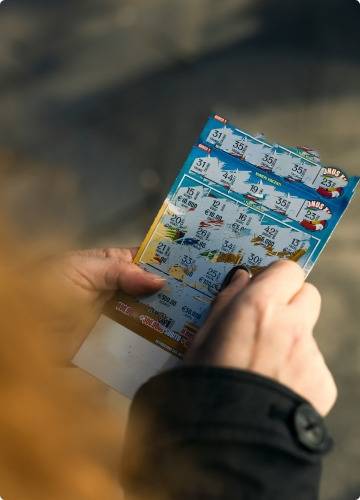
UX/UI mockups are visual representations that show the structure and designed features of an application or website. While "UX" (User Experience) focuses on the overall user experience and how people will react to a product, "UI" (User Interface) focuses on the appearance and aesthetics of the interface. Mockups play a key role in the software development process for several reasons:
- Visual communication: They give teams, customers and all stakeholders in the site a glimpse of what the final product should look like, even before a line of code is written.
- Reducing the risk of errors: By visualizing features and interfaces early on, you can identify potential problems or shortcomings and work to eliminate or replace them right away.
- Cost-effectiveness: Detecting and making changes during the mockup phase is far less expensive than during or after implementation.
- User understanding and engagement: Mockups allow you to test/trial solutions at an early stage, gathering feedback from users, which contributes to creating more intuitive and user-friendly solutions....
In summary, UX/UI mockups are the bridge between the product vision and its actual realization. They ensure that the software under development is functional and tailored to users' needs and expectations.
Key design steps
 Content architecture
Content architecture
In the world of UX/UI design, first impressions are important.
It is important to create not only an attractive design, but most importantly a functional and intuitive one. This is why content architecture is a key step in the interface design process.
It is the foundation on which the entire user experience is based. As part of this process, 3 extremely important elements are considered:
- Understanding the structure of information
In the initial stage, we analyze the users' needs and the goals of the project. We try to understand what information is key and what actions we want users to take. We create a strategy that considers both usability and business aspects. We search for the information that will be presented and plan what interaction elements will be needed.
- Organization and categorization
Here we determine how best to organize the content so users can quickly find what they need. We create a logical hierarchy of categories so that information is easily accessible and readable. Categorization helps keep things organized and makes navigation easier.
- Visualizing structure and interaction
At this stage, we create a graphical representation of the project's structure. We use tools, including site trees or wireframe sketches, to illustrate the layout and hierarchy of each section. We focus on ensuring visual consistency and intuitive interactions.
Find out how to design an interface to improve user experience.
Make an appointment for a free consultation.
Mock-up
Once the strategic foundation in the form of content architecture has been set, the moment of mockup comes. This is a key phase to transform ideas into interactive visualizations.
- Creating prototypes
We move from abstract concepts to concrete forms. We create interactive prototypes, which are dynamic, clickable versions of our design and allow us to visualize how the interface works.
- Low Fidelity (Lo-Fi) and High Fidelity (Hi-Fi)
Lo-Fi are simple, quick sketches that focus on functionality and page layout, ideal for initial concepts. Hi-Fi, on the other hand, are more advanced, detailed prototypes that map out the final look and interactions of the site, used for testing with users and presentations to clients.
At Ideo Software, we focus on making sure you choose the most beneficial solution for your business from among the many concepts.
Testing with users
There are many methods for verifying mockups and functional designs - we use several proven techniques:
1. Heat maps: These show where users most often point their cursor and click, allowing us to analyze their natural behavior and optimize the website.
2. Eye Tracking: We use a specialized device to track users' eye movements, which helps identify the elements of the site that attract their attention and those that are ignored.
3. A/B testing: We conduct these tests when we have several equivalent solutions to choose from. We analyze the reactions of groups of respondents to see which solutions are most effective.
4. Local user studies: Direct observation of users allows for a more complete understanding of their behavior that may escape analytical tools. These tests involve casual interactions with the site or performing specific tasks.
5. Remote user studies: Are an alternative to surveys with a large number of respondents in one location. In remote user testing, we use:
- Moderated tests: Here an expert is responsible for interacting with the user and observing their behavior.
- Unmoderated tests: We use specialized software to automatically collect user data.
6. Iteration and improvement: Based on user feedback and collaboration with the team, we make changes, adjusting the project as needed.

Graphic design
Once the concepts and interactions are prepared, it is time for the graphic design stage. We create a visually appealing interface, taking care of aesthetic consistency, choice of colors, typography and graphic elements.
- Selection of colors and typography
The first step is to select an appropriate color palette and typography. It is necessary to consider the visual identity and understand what emotions and associations are to be evoked through these components.
We aim to create a harmonious color combination that not only attracts attention, but also corresponds to the nature of the project. The right choice of fonts is also crucial, as it affects perception and readability.
- Designing visual elements
At this point we create unique graphic components that add aesthetic value to the project. These can be different themes, icons, buttons or backgrounds.
We strive to ensure that these elements not only harmonize beautifully with the overall design, but also distinguish the project from others. We take care of the consistency between them to make the whole attractive and intuitive for the audience. - Responsiveness (RWD) - Responsive Web Design
Do not forget about adapting mockups to a variety of devices. It is essential that the design is responsive - so that it looks good on computers, tablets or smartphones.
We create flexible solutions that adapt to the size of the screen, ensuring an intuitive and pleasant user experience.
Choosing the right design support tool contributes to easier achievement of the desired goal.
Learn how let's design in the spirit of UX/UI.
What can we do for you?
The quality of a user interface is the foundation of any project's success. Our team of UX/UI experts has extensive experience and practical knowledge to help you transform your visions into intuitive and attractive visual solutions.
Through UX/UI mockup consulting, we offer support at every stage of the process - from needs analysis, to the creation of initial concepts, to the final adaptation of the design to a variety of devices.
Our main goal is to ensure that your design not only stands out aesthetically, but is also functional and tailored to your target audience. Take advantage of our expertise and create a product that will impress with its usability and design.
 Content architecture
Content architecture










